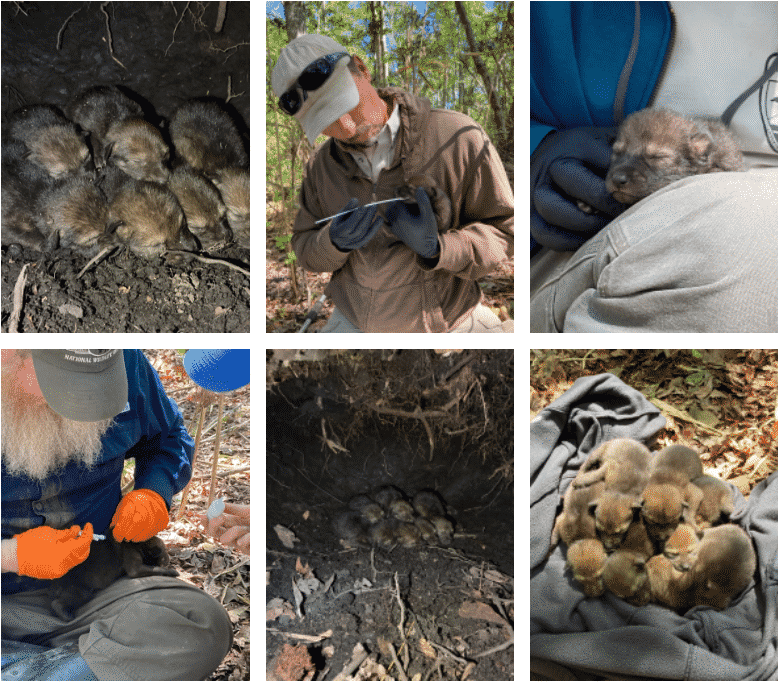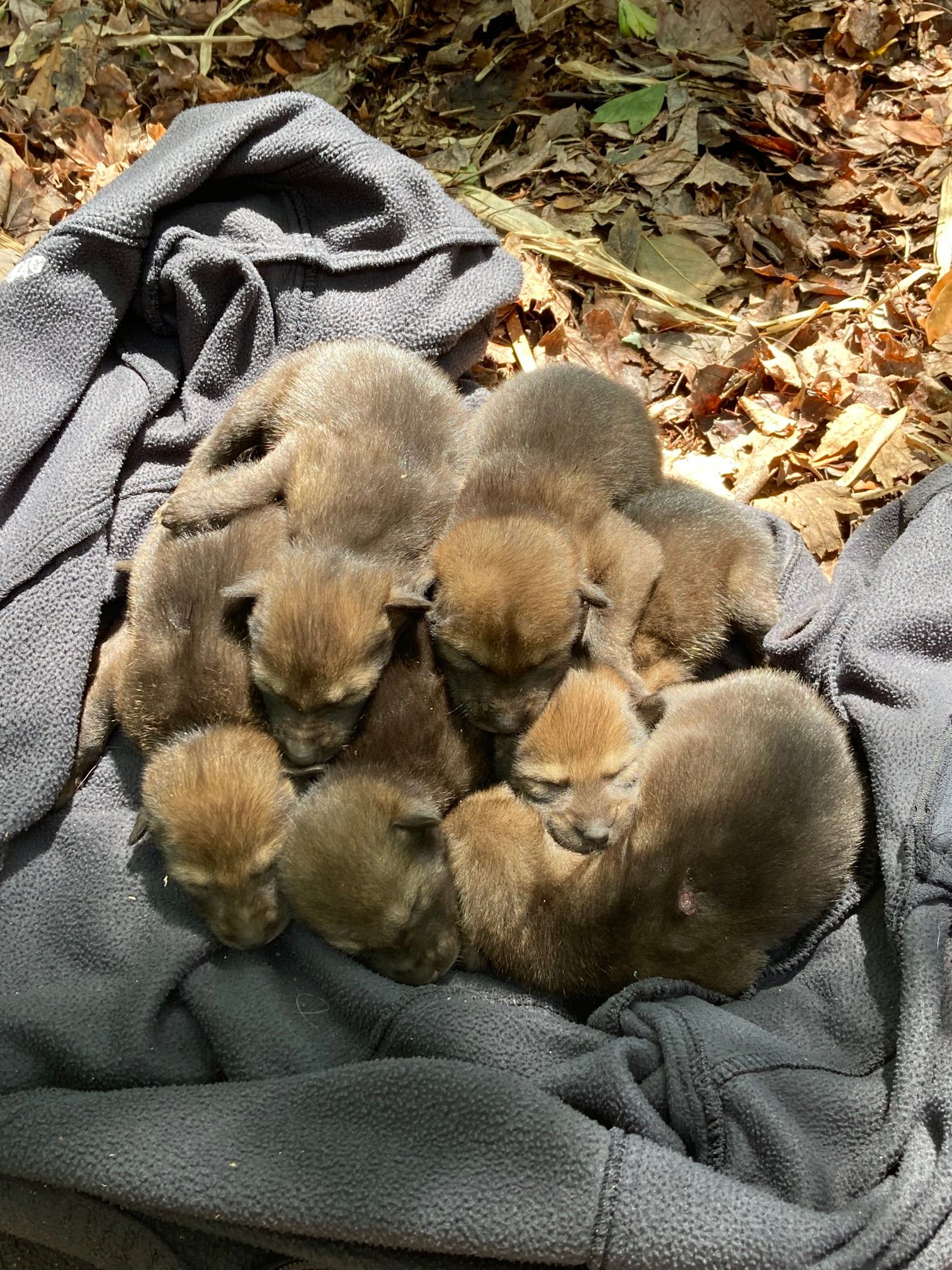There’s newfound hope for the critically endangered red wolf with the birth of a new litter of six pups at coastal North Carolina’s Alligator River National Wildlife Refuge. As the first litter born in the wild in four years, the discovery marks a successful advancement for the U.S. Fish and Wildlife Service’s (USFWS) Red Wolf Recovery Program. Officials confirmed the birth of four female and two male wild red wolves in mid April.
The offsprings’ parents are believed to be a female identified by the program as number 2225 and a father identified as number 2323. The male was one of two wolves relocated to Alligator River National Refuge in December of 2020 from St. Vincent National Wild Refuge, an island propagation site created by the USFWS to help maintain wild breeding pairs in a somewhat controlled environment.
Footage of Male 2323 around his initial release into the area
“The establishment of the red wolf pair and the return to red wolf litters being born in the wild is a major milestone and an important step towards recovery,” said Joe Madison, manager of the recovery program. “However, there is much work to be done. The birth of this litter serves as an example of what can be achieved.”
Declared extinct in 1980 and now classified as an endangered species, red wolves were once abundant throughout the Southeast, where they played a key role in maintaining environmental habitats. As an apex species, they balanced ecosystems by maintaining healthy population levels of smaller predators.

Although they were successfully reintroduced in 1987, red wolf population growth has been hindered by human-caused mortalities, including gunshots and vehicle strikes, as well as breeding with coyotes.
The USFWS’s Red Wolf Recovery Program is an ongoing collaborative effort with the North Carolina Wildlife Resource Commission, the Red Wolf Species Survival Program, and Saving Animals From Extinction, which has facilities that manage the captive red wolf population. The next steps will be based around the release of captive-born red wolves that were born this past winter.
“The Service continues to work with local and state governments, conservation organizations, private landowners, and other partners in red wolf conservation,” Madison said. “Having broad support is essential to the future success of the red wolf program”
Cover photo of the new pups courtesy of the Red Wolf Recovery Program







